Arctic by RIB, Episode 1 - Antwerp to Scotland
By Thomas Panagiotopoulos (aka Thomas P.)
It is true that each journey is not the same. However, this one has many peculiarities. It is a journey to one of the last parts of the earth reached by man that even today remains untouched and largely unexplored.
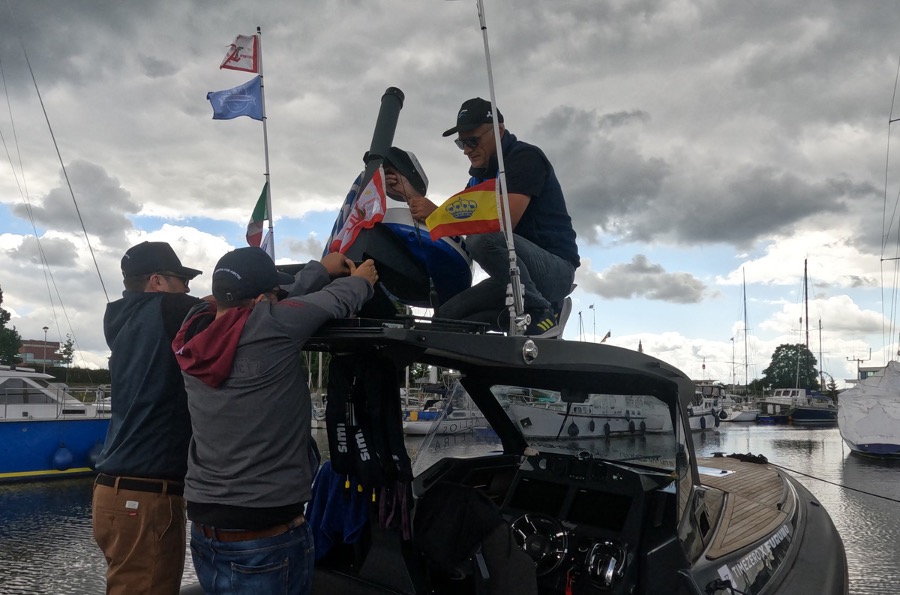
Challenges of Boating in the Arctic
It's not just the many miles we had to cover or the long passes we had to cross. It's the extreme temperatures we would encounter, the icebergs we had to navigate between, the thick fog that often covers everything in these latitudes and you can't even see your bow.
The moving sheets of ice that usually cover a large area are quickly transported by the wind and especially by the strong currents and can block your way or strand you for days on some isolated and deserted coast.
Polar bears, which come down to the coast in search of food which due to climate change and melting ice has become difficult to find, have become particularly threatening and very dangerous.
Sudden changes in weather and stormy winds due to the low barometric pressures that settle almost permanently in these latitudes are the main reasons that the northern seas are considered the most dangerous, which is why the southern Cape of Greenland is considered the windiest on the planet.
Quest for the Holy Grail: The Northwest Passage
And of course, the legendary Northwest Passage: the most mythical passage on the planet that just hearing about it fills with awe and increases the anxieties and insecurities of even the most experienced seafarer. Where there is no escape route, there is absolutely no communication. There, where if you take the first step and pass its entrance there is no turning back except to reach the end, crossing the frozen ocean.
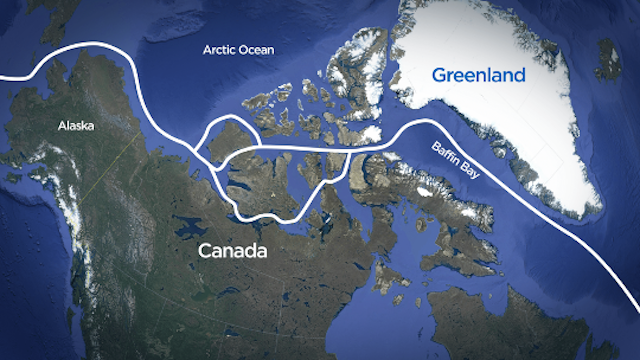
Navigating through the Northwest Passage is extremely difficult, as are the skipper's decisions about which roads to take each time to avoid getting trapped by the floating ice floes. Its history is connected with shipwrecks and missing persons. For centuries, skilled sailors such as Henry Hudson and James Cook failed to cross it.
Harsh weather, thick ice and invincible dry spells forced many expeditions to turn back. But the mission that turned into tragedy was that of British officer John Franklin in 1845, whose wrecks of his two ships, Terror and Erebus, were only recently found.
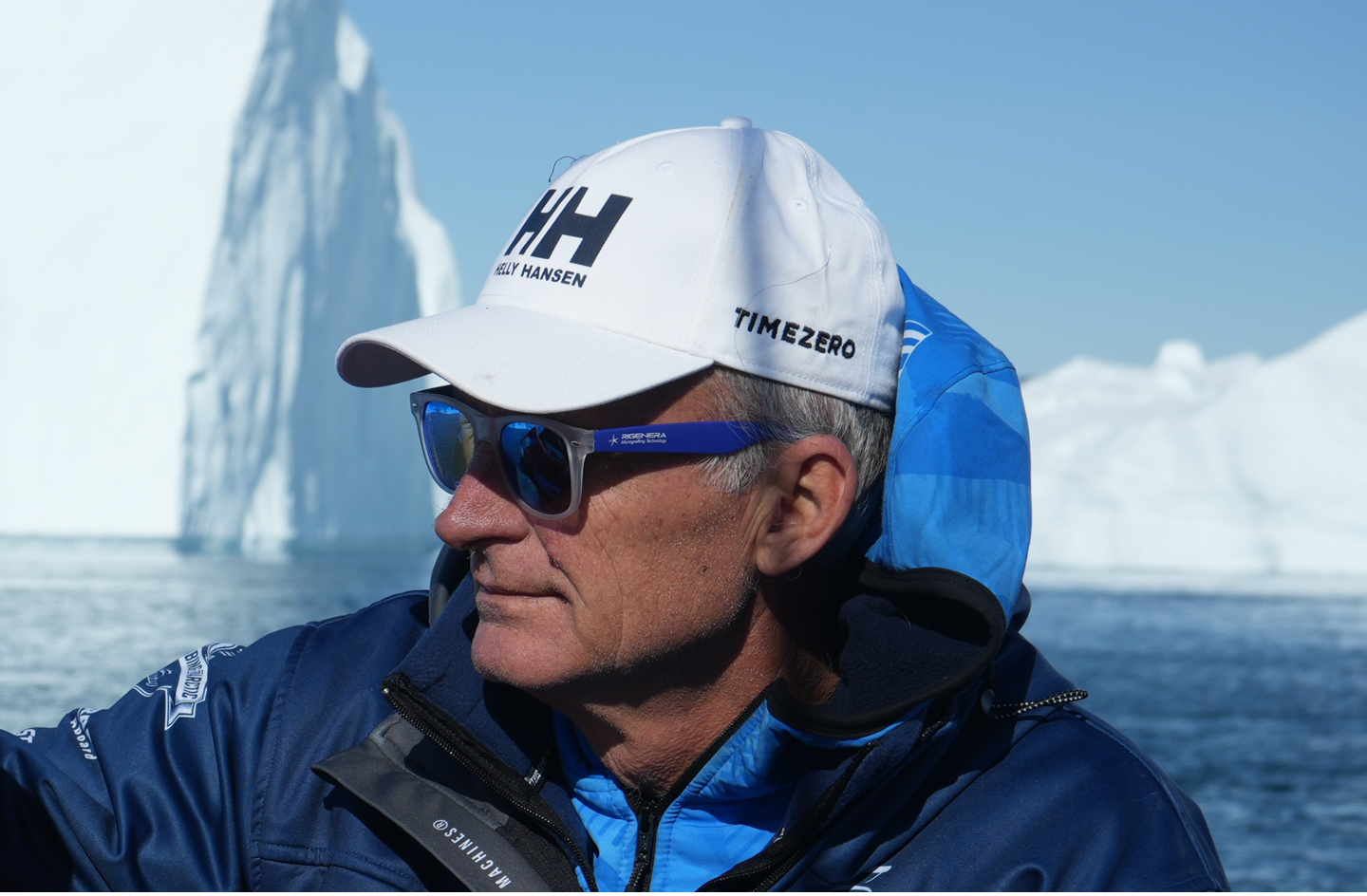
Refueling is also a huge problem, since the small Inuit communities are hundreds of nautical miles apart.
We will be wandering in the highest latitudes, where the strong magnetic fields render conventional compasses completely useless since their deviation exceeds 50%. The challenge of traversing the frozen Arctic Ocean is enormous. The end of the world, as it is called, the most unexplored and uncharted area of the planet. Where Mother Nature is the ultimate ruler.
All of the above raises the level of difficulty of our mission to the highest level since it was certain that we would be called upon to face enormous obstacles that require us to overcome our limits.
The Boat: A Seafighter 36 Cabin
The boat chosen for this expedition was the Seafighter 36 C, which is produced by the company Seafighter - Ribs. It is an inflatable boat of Hellenic design and production and with no doubt it is one of the best vessels in its class.
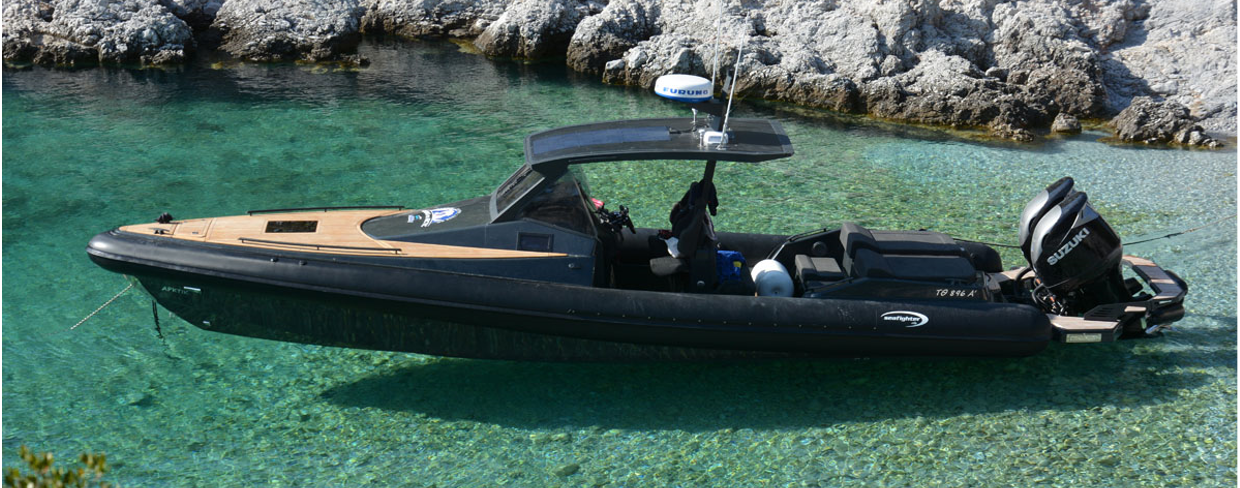
It’s already been 10 years since Seafighter 36 Cabin first appeared in the market, immediately gaining a prominent position amongst the mega-ribs, mainly due to its aggressive sport line and its intense nautical character, combined with a wonderfully designed cabin. It stands out for the excellent quality of construction and finishing, while the design of the cabin and its deck is perfectly adapted to our needs, offering high level ergonomics and functionality.
It runs on a deep-V hull characterized by the presence of two ventilated steps and two spray rails per side, the upper of which runs all the length of the hull, while the 24 degrees of deadrise at the transom guarantee soft cruising.
The combination of Seafighter’s economic hull with the extremely low fuel consumption of Suzuki’s outboard engines will give us the maximum possible range, which is very important for the long passages we have to travel.
Saturday July 2, 2022 – One day before sailing-set off
Carlos Santaella and David Burgos flew from Barcelona to Antwerp to help us with the last preparations and to wish us good seas. We set up the radar and satellite compass, transferred fuel from a nearby gas station, and everything was ready to set sail.
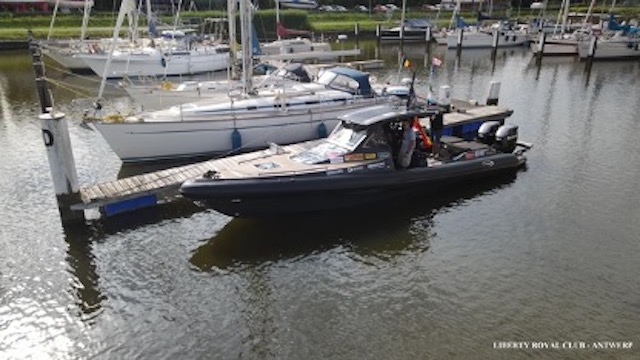
DAY 1st / Sunday 3 of July 2022
Position: 51°14΄Ν 04°23΄Ε – Antwerp Belgium
The waters of the North Sea began to rise, the Schelde river swelled and finally, at 6 o'clock in the morning the gates of the Liberty Royal Club-Antwerp marina opened. We were now free to go out into the river that after 50 nautical miles would lead us to our great beloved. The sea was calling us.
Kalogeropoulos Konstantinos and I were all set behind the navigation screens. There is nothing more liberating than taking your seat behind the console and pushing the throttles towards your bow. After 2 hours of navigation on the river we raced out into the North Sea. 13 degrees Celsius (55 degrees Fahrenheit). Goodbye, magical, warm, Greek summer...
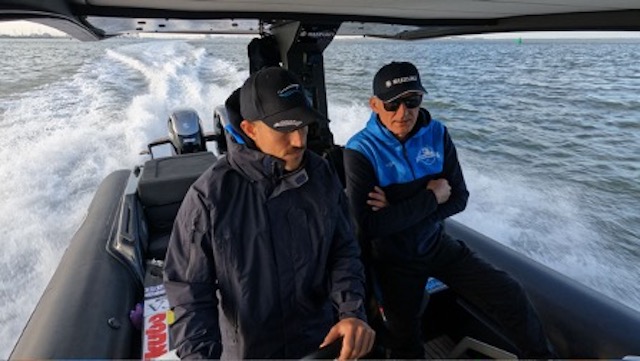
Time: 08:20
51°18΄Ν 03°16΄Ε – Blankenberge marina.
We filled the boat's main tanks with 1450 liters (383 gal.) from the gas station just before the marina entrance and turned our bow to Lowestoft, England. According to the schedule, we would cover the 100 nautical miles that separated us from Lowestoft Marina and spend the night there.
But our "thirst" was enormous. Sirens are magically attractive…We traveled for the journey. Until our reservoirs (and fuel tanks) run dry.
Of course, it was also a first-class opportunity for a real test, in real conditions, to check our autonomy and the behavior of the boat in general.
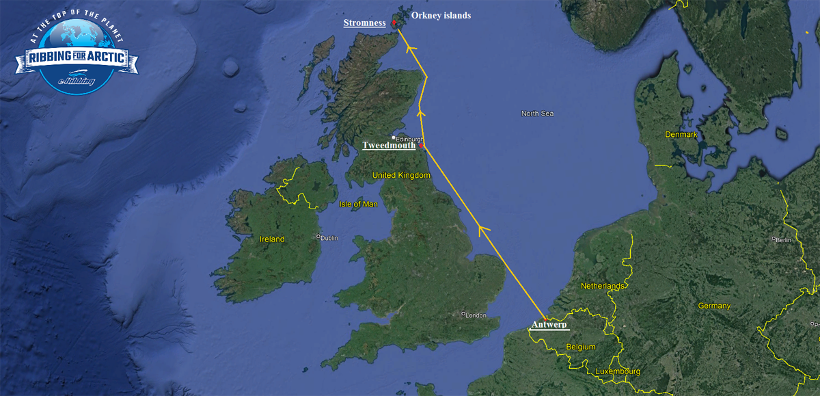
The first 3 hours were quite difficult, dealing with NW winds whose intensity exceeded 4 Beaufort (16 knots.). However, our mood was high. At 5 pm we crossed over to the western hemisphere, which would host us for the rest of our mission.
Finally, after 16 hours of navigation, we docked at Tweedmouth, 55°45΄N 02°00΄W, just before the Scottish border. A total of 400 nm and 1394 liters (368 gal.) of fuel, which translates to 3.48 (.92 gal.) liters per nautical mile.
A wonderful ratio for our twin-prop Suzuki DF 350A engines if you factor in our extra loads, while the boat responded admirably to all forms of swell inspiring confidence and security.
DAY 2nd / Monday 4 of July 2022
Position: 55°52΄Ν 02°05΄W – Eyemouth Scotland
The second day was a very stressful, tiring and wasted day as it was impossible to refuel. In no small or large port on the whole east coast of Scotland is there a gas station. Not Edinburgh, not Aberdeen. No one to carry gasoline either and gas stations are not allowed to put gasoline in flexible tanks even if they are certified, like ours.
It was a day full of anxiety and tension but finally, late at night, thanks to our friend Steve Willis who mobilized all the Racing clubs in England through social media, I received many messages and visits on the boat from people at sea who rushed to help me with their drums and trailers.
Scots to the Rescue
My indignation and anger at the apathy with which many Scots were dealing with our problem turned into immense gratitude for some wonderful people who passionately followed our mission and finally found us a solution.
Late in the evening we finished refueling and completely exhausted we fell asleep in the boat cabin.
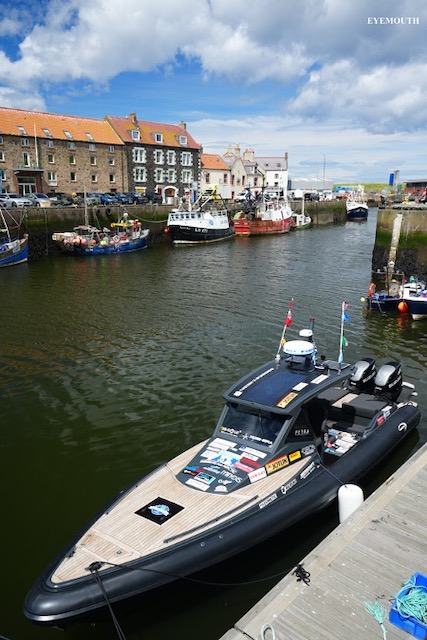
Monday: Part II – Scotland to the Orkneys
IF YOU HAVE MISSED ANY EPISODES OR WOULD LIKE TO SEE MORE CLICK HERE.